310 Powder
$0.00
310 Powder
| Product | 310 Powder |
| CAS No. | N/A |
| Appearance | Metallic Gray Powder |
| Purity | ≥99%, ≥99.9%, ≥95%(Other purities are also available) |
| APS | 1-5 µM, 10-53 µM (Can be customized), Ask for other available size range. |
| Ingredient | Fe-25Cr-20Ni |
| Density | 7.7-8.0g/cm3 |
| Molecular Weight | N/A |
| Product Codes | NCZ-DCY-338/25 |
310 Description:
310 Powder is one of the numerous advanced ceramic materials manufactured by Nanochemazone. Nanochemazone produces too many standard grades when applicable, including Mil Spec (military grade); ACS, Reagent and Technical Grade; Food, Agricultural and Pharmaceutical Grade; Optical Grade, USP and EP/BP (European Pharmacopoeia/British Pharmacopoeia) and follows applicable ASTM testing standards. Typical and custom packaging is available. Additional technical, research and safety (MSDS) information are available. Please request a quote above for more information on lead time and pricing.
310 Powder Related Information :
Storage Conditions:
Airtight sealed, avoid light and keep dry at room temperature.
Please contact us for customization and price inquiry
Email: [email protected]
Note: We supply different size ranges of Nano and micron as per the client’s requirements and also accept customization in various parameters.
310 Powder
310 powder is an austenitic stainless steel powder containing high levels of chromium, nickel and nitrogen for enhanced mechanical properties and corrosion resistance. It offers an excellent combination of strength, hardness, toughness and wear resistance.
Overview of 310 Powder
310 powder is an austenitic stainless steel powder containing high levels of chromium, nickel and nitrogen for enhanced mechanical properties and corrosion resistance. It offers an excellent combination of strength, hardness, toughness and wear resistance.
Key properties and advantages of 310 powder include:
310 Powder Properties and Characteristics
| Properties | Details |
| Composition | Fe-25Cr-20Ni-0.25N alloy |
| Density | 8.1 g/cc |
| Particle shape | Irregular, angular |
| Size range | 10-150 microns |
| Apparent density | Up to 50% of true density |
| Flowability | Moderate |
| Strength | Very high for a 300 series powder |
| Wear resistance | Excellent due to work hardening |
310 powder is widely used in applications requiring hardness, wear resistance, and corrosion resistance like valve parts, shafts, bearing cages, fasteners, surgical instruments etc.
310 Powder Composition
Typical composition of 310 stainless steel powder:
310 Powder Composition
| Element | Weight % |
| Iron (Fe) | Balance |
| Chromium (Cr) | 24-26% |
| Nickel (Ni) | 19-22% |
| Nitrogen (N) | 0.2-0.4% |
| Carbon (C) | 0.25% max |
| Silicon (Si) | 1.5% max |
| Manganese (Mn) | 2% max |
| Sulfur (S) | 0.03% max |
| Phosphorus (P) | 0.045% max |
Iron provides the ferritic matrix and ductility
Chromium and nickel enhance corrosion resistance
Nitrogen provides solid solution strengthening
Carbon, silicon, manganese controlled as tramp elements
310 Powder Physical Properties
| Property | Values |
| Density | 8.1 g/cc |
| Melting point | 1370-1400°C |
| Electrical resistivity | 0.8 μΩ-m |
| Thermal conductivity | 12 W/mK |
| Thermal expansion | 11 x 10^-6 /K |
| Maximum service temperature | 1150°C |
High density compared to ferritic stainless steels
Maintains excellent strength at elevated temperatures
Resistivity higher than pure iron or carbon steels
Lower thermal conductivity than carbon steel
Can withstand continuous service up to 1150°C
The physical properties make 310 suitable for high temperature applications requiring hardness, strength and corrosion resistance.
310 Powder Mechanical Properties
| Property | Values |
| Tensile strength | 760-900 MPa |
| Yield strength | 450-550 MPa |
| Elongation | 35-40% |
| Hardness | 32-38 HRC |
| Impact strength | 50-100 J |
| Modulus of elasticity | 190-210 GPa |
Very high strength for 300 series stainless steel
Excellent hardness and wear resistance
High toughness and impact strength
Strength can be further increased through cold working
Cold working also significantly enhances hardness
The properties provide an excellent combination of strength, hardness and toughness required in many wear resistant applications.
310 Powder Applications
Typical applications of 310 stainless steel powder include:
310 Powder Applications
| Industry | Example Uses |
| Petrochemical | Valves, pumps, shafts |
| Food processing | Extruder screws, blades |
| Automotive | Gears, shafts, fasteners |
| Manufacturing | Press tooling, bearing cages |
| Medical | Surgical instruments, implants |
Some specific product uses:
High strength fasteners, bolts, nuts
Pump and valve components like seals, shafts
Food processing extruder screws and blades
High hardness press tooling and molds
Mixing equipment, impellers requiring wear resistance
Its excellent combination of properties make 310 widely used for specialized applications across industries.
310 Powder Specifications
Relevant specifications and standards:
310 Powder Standards
| Standard | Description |
| ASTM A276 | Standard specification for stainless steel bars and shapes |
| ASTM A314 | Standard for stainless steel bent pipe and tubing |
| ASME SA-479 | Specification for stainless steel tubing |
| AMS 5517 | Annealed corrosion resistant steel bar, wire, forgings |
| AMS 5903 | Precipitation hardening stainless steel bar, wire, forgings |
These standards define:
Chemical composition limits of 310 alloy
Permissible impurity levels like S, P
Required mechanical properties
Approved production methods
Compliance testing protocols
Proper packaging, labeling and documentation
Meeting certification requirements ensures suitability of the powder.
310 Powder Particle Sizes
310 Powder Particle Size Distribution
| Particle Size | Characteristics |
| 10-45 microns | Ultrafine grade for high density and surface finish |
| 45-150 microns | Coarse grade provides good flowability |
| 15-150 microns | Standard grade for pressing and sintering |
Finer particles allow greater densification during sintering
Coarser powder flows better and fills die cavities uniformly
Size range is tailored based on final part properties needed
Both gas and water atomized powders are available
Controlling particle size distribution allows optimizing processing behavior and final part performance.
310 Powder Apparent Density
| Apparent Density | Details |
| Up to 50% of true density | For irregular powder morphology |
| 4.5-5.5 g/cc typical | Improves with greater packing density |
Higher apparent density improves powder flow and compressibility
Irregular morphology limits maximum packing density
Values up to 60% are possible with spherical powders
High apparent density improves press filling efficiency
Higher apparent density leads to better manufacturing productivity and part quality.
310 Powder Production Method
| Method | Details |
| Gas atomization | High pressure inert gas breaks molten metal stream into fine droplets |
| Water atomization | High pressure water jet breaks metal into fine particles |
| Vacuum induction melting | High purity input materials melted under vacuum |
| Multiple remelting | Improves chemical homogenization |
| Sieving | Classifies powder into different particle size ranges |
Gas atomization provides clean, spherical powder morphology
Water atomization is a lower cost process with irregular particles
Vacuum melting and remelting minimizes gaseous impurities
Post-processing allows customization of particle sizes
Automated production and stringent quality control result in consistent powder suitable for critical applications.
310 Powder Handling and Storage
| Recommendation | Reason |
| Use PPE and ventilation | Avoid exposure to fine metallic particles |
| Ensure proper grounding | Prevent static discharge while handling |
| Avoid ignition sources | Powder can combust in oxygen atmosphere |
| Use non-sparking tools | Prevent possibility of ignition |
| Follow safety protocols | Reduce risk of burns, inhalation, ingestion |
| Store in stable containers | Prevent contamination or oxidation |
As 310 powder is flammable, ignition and explosion risks should be controlled during handling and storage. Otherwise it is relatively safe with proper precautions.
310 Powder Inspection and Testing
| Test | Details |
| Chemical analysis | ICP and XRF verify composition |
| Particle size distribution | Laser diffraction determines size distribution |
| Apparent density | Hall flowmeter test per ASTM B212 standard |
| Powder morphology | SEM imaging shows particle shape |
| Flow rate analysis | Gravity flow rate through specified nozzle |
| Loss on ignition | Determines residual moisture content |
Stringent testing ensures the powder meets the required chemical purity, particle characteristics, density, morphology, and flowability per applicable specifications.
310 Powder Pros and Cons
Advantages of 310 Powder
Excellent strength and hardness for stainless steel powder
High temperature strength and corrosion resistance
Good ductility, toughness and weldability
Excellent wear and abrasion resistance
Readily work hardens significantly
More cost-effective than high nickel or exotic alloys
Disadvantages of 310 Powder
Lower ductility than austenitic grades in annealed state
Lower pitting corrosion resistance than 316 grade
Requires care during welding to avoid sensitization
Limited cold heading and forming capability
Susceptible to sigma phase embrittlement at high temperatures
Surface discoloration over time in some environments
Comparison With 316L Powder
310 vs 316L Stainless Steel Powder
| Parameter | 310 | 316L |
| Density | 8.1 g/cc | 8.0 g/cc |
| Strength | 760-900 MPa | 485-550 MPa |
| Hardness | 32-38 HRC | 79-95 HRB |
| Corrosion resistance | Very good | Excellent |
| Cost | Low | High |
| Uses | Wear parts, tools | Chemical plants, marine |
310 has far higher strength and hardness
316L provides better overall corrosion resistance
310 is more cost-effective than 316L
310 suited for applications needing hardness and wear resistance
316L preferred where corrosion is the primary concern
310 Powder FAQs
Q: What are the main applications of 310 stainless steel powder?
A: Main applications include high-strength fasteners, pump and valve components, extruder screws, press tooling, bearing cages, shafts, and surgical instruments requiring hardness, strength and wear resistance.
Q: What is nitrogen’s role in 310 stainless steel?
A: Nitrogen provides substantial solid solution strengthening which significantly increases the strength and hardness of 310 stainless steel.
Q: What precautions are needed when working with 310 powder?
A: Recommended precautions include ventilation, inert atmosphere, grounding, avoiding ignition sources, protective gear, using non-sparking tools, and safe storage in stable containers.
Q: How does 310 stainless steel differ from 304 and 316 grades?
A: 310 has much higher strength and hardness than 304 or 316 due to its high nitrogen content. It offers better wear resistance but lower corrosion resistance than 316.
Category: Iron Based Alloy Powder
Description
Description
Note: For pricing & ordering information, please get in touch with us at [email protected]
Please contact us for quotes on Larger Quantities and customization. E-mail: [email protected]
Customization:
If you are planning to order large quantities for your industrial and academic needs, please note that customization of parameters (such as size, length, purity, functionalities, etc.) is available upon request.
NOTE:
Images, pictures, colors, particle sizes, purity, packing, descriptions, and specifications for the real and actual goods may differ. These are only used on the website for the purposes of reference, advertising, and portrayal. Please contact us via email at [email protected] or by phone at (+1 780 612 4177) if you have any questions.
Reviews (0)
Only logged in customers who have purchased this product may leave a review.
Shipping & Delivery
Related products
316L Powder
$0.00
316L Powder
| Product | 316L Powder |
| CAS No. | 12597-68-1 |
| Appearance | Metallic Gray Powder |
| Purity | ≥99%, ≥99.9%, ≥95%(Other purities are also available) |
| APS | 1-5 µM, 10-53 µM (Can be customized), Ask for other available size range. |
| Ingredient | Fe-Cr-Ni-Mo |
| Density | 7.99g/cm3 |
| Molecular Weight | 55.22g/mol |
| Product Codes | NCZ-DCY-349/25 |
316L Description:
316L Powder is one of the numerous advanced ceramic materials manufactured by Nanochemazone. Nanochemazone produces too many standard grades when applicable, including Mil Spec (military grade); ACS, Reagent and Technical Grade; Food, Agricultural and Pharmaceutical Grade; Optical Grade, USP and EP/BP (European Pharmacopoeia/British Pharmacopoeia) and follows applicable ASTM testing standards. Typical and custom packaging is available. Additional technical, research and safety (MSDS) information are available. Please request a quote above for more information on lead time and pricing.316L Powder Related Information :
Storage Conditions: Airtight sealed, avoid light and keep dry at room temperature. Please contact us for customization and price inquiry Email: [email protected] Note: We supply different size ranges of Nano and micron as per the client’s requirements and also accept customization in various parameters. Best Stainless Steel 316L Powder for 3D Printing Stainless steel 316L powder is a versatile and widely used material in various industries. Its unique properties make it suitable for applications ranging from 3D printing to biomedical implants. In this article, we will explore the characteristics, uses, manufacturing process, and advantages of stainless steel 316L powder. Overview of Stainless Steel 316L Powder 316L stainless steel belongs to the austenitic class of stainless steels. The addition of 2-3% molybdenum along with nickel and chromium imparts excellent pitting and crevice corrosion resistance in harsh environments. The ‘L’ denotes lower carbon content to avoid carbide precipitation during welding. Key characteristics of 316L powder include: Excellent corrosion resistance in harsh environments High oxidation and sulfidation resistance at elevated temperatures Very good weldability and formability Non-magnetic austenitic structure Available in range of particle size distributions 316L powder is suitable for applications requiring excellent corrosion resistance like chemical processing, pharmaceutical, food and beverage, marine equipment and biomedical implants. This article provides a detailed overview of 316L powder. Chemical Composition of 316L Powder| Element | Weight % |
| Iron (Fe) | Balance |
| Chromium (Cr) | 16-18% |
| Nickel (Ni) | 10-14% |
| Molybdenum (Mo) | 2-3% |
| Manganese (Mn) | ≤ 2% |
| Silicon (Si) | ≤ 1% |
| Carbon (C) | ≤ 0.03% |
| Phosphorus (P) | ≤ 0.045% |
| Sulfur (S) | ≤ 0.03% |
| Property | Value |
| Density | 7.9-8.1 g/cm3 |
| Melting Point | 1370-1400°C |
| Thermal Conductivity | 16 W/mK |
| Electrical Resistivity | 0.75 μΩ.cm |
| Young’s Modulus | 190-210 GPa |
| Poisson’s Ratio | 0.27-0.30 |
| Tensile Strength | 485-620 MPa |
| Yield Strength | 170-310 MPa |
| Elongation | 40-50% |
| Hardness | 79-95 HRB |
| Parameter | 316L | 304L |
| Composition | Fe-Cr-Ni-Mo | Fe-Cr-Ni |
| Corrosion resistance | Much better | Good |
| Cost | Higher | Lower |
| Temperature resistance | Better | Good |
| Weldability | Excellent | Excellent |
| Availability | Moderate | Excellent |
| Applications | Marine, chemical industry | Consumer products, appliances |
316L Stainless Steel Powder
$0.00
316L Stainless Steel Powder
| Product | 316L Stainless Steel Powder |
| CAS No. | 12597-68-1 |
| Appearance | Metallic Gray Powder |
| Purity | ≥99%, ≥99.9%, ≥95%(Other purities are also available) |
| APS | 1-5 µM, 10-53 µM (Can be customized), Ask for other available size range. |
| Ingredient | Fe-16-18Cr-10-14Ni-2-3-Mo |
| Density | 7.99g/cm3 |
| Molecular Weight | N/A |
| Product Codes | NCZ-DCY-340/25 |
316L Stainless Steel Description:
316L Stainless Steel Powder is one of the numerous advanced ceramic materials manufactured by Nanochemazone. Nanochemazone produces too many standard grades when applicable, including Mil Spec (military grade); ACS, Reagent and Technical Grade; Food, Agricultural and Pharmaceutical Grade; Optical Grade, USP and EP/BP (European Pharmacopoeia/British Pharmacopoeia) and follows applicable ASTM testing standards. Typical and custom packaging is available. Additional technical, research and safety (MSDS) information are available. Please request a quote above for more information on lead time and pricing.316L Stainless Steel Powder Related Information :
Storage Conditions: Airtight sealed, avoid light and keep dry at room temperature. Please contact us for customization and price inquiry Email: [email protected] Note: We supply different size ranges of Nano and micron as per the client’s requirements and also accept customization in various parameters. 316L Stainless Steel Powder 316L Stainless Steel Powder(ss316L) 316L is a stainless steel grade, which is classified according to the metallographic structure and belongs to austenitic stainless steel. Overview of 316L Stainless Steel Powder 316L is an austenitic stainless steel powder widely used in additive manufacturing to produce corrosion resistant parts with good mechanical properties and weldability. This article provides a detailed guide to 316L powder. Key aspects covered include composition, properties, AM process parameters, applications, specifications, suppliers, handling, inspection methods, comparisons to alternatives, pros and cons, and FAQs. Tables are used to present information in an easy-to-reference format. Composition of 316L Stainless Steel Powder The composition of 316L stainless steel powder is:| Element | Weight % | Purpose |
| Iron | Balance | Principal matrix element |
| Chromium | 16-18 | Corrosion resistance |
| Nickel | 10-14 | Austenite stabilizer |
| Molybdenum | 2-3 | Corrosion resistance |
| Manganese | <2 | Deoxidizer |
| Silicon | <1 | Deoxidizer |
| Carbon | <0.03 | Avoid carbide precipitation |
| Property | Description |
| Corrosion resistance | Excellent resistance to pitting and crevice corrosion |
| Strength | Tensile strength up to 620 MPa |
| Weldability | Readily weldable and less prone to sensitization |
| Fabricability | Easily formed into complex shapes |
| Biocompatibility | Safe for contact with human body |
| Temperature resistance | Resistant up to 900°C in oxidizing environments |
| Parameter | Typical value | Purpose |
| Layer height | 20-100 μm | Balance speed and resolution |
| Laser power | 150-350 W | Melting condition without vaporization |
| Scan speed | 200-1200 mm/s | Density versus build rate |
| Hatch spacing | 100-200 μm | Mechanical properties |
| Supports | Minimal tree/lattice | Overhangs, internal channels |
| Hot isostatic pressing | 1150°C, 100 MPa, 3 hrs | Eliminate porosity |
| Industry | Applications |
| Aerospace | Structural brackets, panels, housings |
| Automotive | Turbine housings, impellers, valves |
| Chemical | Pumps, valves, reaction vessels |
| Oil and gas | Downhole tools, manifolds, flanges |
| Biomedical | Dental, orthopedic implants, surgical tools |
| Parameter | Specification |
| Particle size range | 15-45 μm typical |
| Particle shape | Spherical morphology |
| Apparent density | > 4 g/cc |
| Tap density | > 6 g/cc |
| Hall flow rate | > 23 sec for 50 g |
| Purity | >99.9% |
| Oxygen content | <1000 ppm |
| Method | Parameters Tested |
| Sieve analysis | Particle size distribution |
| SEM imaging | Particle morphology |
| EDX | Chemistry and composition |
| XRD | Phases present |
| Pycnometry | Density |
| Hall flow rate | Powder flowability |
| Alloy | Corrosion Resistance | Strength | Cost | Printability |
| 316L | Excellent | Medium | Medium | Excellent |
| 17-4PH | Good | High | Medium | Good |
| IN718 | Good | Very high | High | Fair |
| CoCr | Fair | Medium | Medium | Good |
| Pros | Cons |
| Excellent corrosion resistance and biocompatibility | Lower high temperature strength than alloys |
| Readily weldable and machinable | Susceptible to porosity during printing |
| Cost advantage over exotic alloys | Prone to thermal cracking |
| Can match wrought material properties | Required post-processing like HIP |
| Range of suppliers available | Lower hardness than precipitation hardening alloys |
420 Powder
$0.00
420 Powder
| Product | 420 Powder |
| CAS No. | 420-04-2 |
| Appearance | Silvery-Gray Powder |
| Purity | ≥99%, ≥99.9%, ≥95%(Other purities are also available) |
| APS | 1-5 µM, 10-53 µM (Can be customized), Ask for other available size range. |
| Ingredient | Fe-12Cr-0.3C |
| Density | 7.9g/cm3 |
| Molecular Weight | N/A |
| Product Codes | NCZ-DCY-342/25 |
420 Description:
420 Powder is one of the numerous advanced ceramic materials manufactured by Nanochemazone. Nanochemazone produces too many standard grades when applicable, including Mil Spec (military grade); ACS, Reagent and Technical Grade; Food, Agricultural and Pharmaceutical Grade; Optical Grade, USP and EP/BP (European Pharmacopoeia/British Pharmacopoeia) and follows applicable ASTM testing standards. Typical and custom packaging is available. Additional technical, research and safety (MSDS) information are available. Please request a quote above for more information on lead time and pricing.420 Powder Related Information:
Storage Conditions: Airtight sealed, avoid light and keep dry at room temperature. Please contact us for customization and price inquiry Email: [email protected] Note: We supply different size ranges of Nano and micron as per the client’s requirements and also accept customization in various parameters. 420 powder 316L is an austenitic stainless steel. The Mo content of 316L gives it excellent corrosion resistance 17-4PH is a martensitic precipitation hardening stainless steel with high strength, hardness and corrosion resistance. 420 is a martensitic stainless steel with good mechanical properties, thermal conductivity and polishing properties similar to mold steel, while maintaining good corrosion resistance. 316L is an austenitic stainless steel. The Mo content of 316L gives it excellent corrosion resistance 17-4PH is a martensitic precipitation hardening stainless steel with high strength, hardness and corrosion resistance. 420 is a martensitic stainless steel with good mechanical properties, thermal conductivity and polishing properties similar to mold steel, while maintaining good corrosion resistance. Physical properties| Trademark | Size range | Size distribution | Hall flow rate | Bulk density | Tap density | ||
| D10(μm) | D50(μm) | D90(μm) | |||||
| 316L | 15-53μm | 17-23 | 30-38 | 50-58 | 25s/50g | 4.0g/cm³ | 4.5g/cm³ |
| 17-4PH | 15-53μm | 4.0g/cm³ | 4.5g/cm³ | ||||
| 420 | 15-53μm | 4.0g/cm³ | 4.5g/cm³ | ||||
| Trademark | Heat treatment recommendations |
| 316L | 1050℃/2h/WQ |
| 17-4PH | 1040°C/2h +480°C/4h |
| 420 | 1050°C/0.5h/WQ |
| Trademark | Hardness(HRC) | Tensile strength (σb/Mpa) | Yield strength (σp0.2/Mpa) | Elongation (δ5/%) |
| 316L | 13-15 | 650 | 550 | 45 |
| 17-4PH | 32-42 | 1310 | 1175 | 13 |
| 420 | 48-52 | 1950 | 1530 | 7 |
| Trademark | C | Cr | Ni | Cu | Nb | Mo |
| 316L | ≤0.03 | 16.00-18.00 | 10.00-14.00 | – | – | 2.00-3.00 |
| 17-4PH | ≤0.03 | 15.5-17.5 | 3.00-5.00 | 3.00-5.00 | 0.15-0.45 | – |
| 420 | 0.35-0.45 | 12.00-14.00 | ≤0.6 | – | ≤0.20 | ≤0.20 |
| Trademark | Si | Mn | S | P | O | Fe |
| 316L | ≤1.00 | ≤2.00 | ≤0.03 | ≤0.045 | ≤0.08 | Bal |
| 17-4PH | ≤1.00 | ≤1.00 | ≤0.03 | ≤0.03 | ≤0.03 | Bal |
| 420 | ≤1.00 | ≤1.00 | ≤0.03 | ≤0.045 | ≤0.03 | Bal |
430L Powder
$0.00
430L Powder
| Product | 430L Powder |
| CAS No. | 7439-89-6 |
| Appearance | Silvery-Gray Powder |
| Purity | ≥99%, ≥99.9%, ≥95%(Other purities are also available) |
| APS | 1-5 µM, 10-53 µM (Can be customized), Ask for other available size range. |
| Ingredient | Fe-16Cr |
| Density | 2.8g/cm3 |
| Molecular Weight | N/A |
| Product Codes | NCZ-DCY-343/25 |
430L Description:
430L Powder is one of the numerous advanced ceramic materials manufactured by Nanochemazone. Nanochemazone produces too many standard grades when applicable, including Mil Spec (military grade); ACS, Reagent and Technical Grade; Food, Agricultural and Pharmaceutical Grade; Optical Grade, USP and EP/BP (European Pharmacopoeia/British Pharmacopoeia) and follows applicable ASTM testing standards. Typical and custom packaging is available. Additional technical, research and safety (MSDS) information are available. Please request a quote above for more information on lead time and pricing.430L Powder Related Information :
Storage Conditions: Airtight sealed, avoid light and keep dry at room temperature. Please contact us for customization and price inquiry Email: [email protected] Note: We supply different size ranges of Nano and micron as per the client’s requirements and also accept customization in various parameters. 430L Powder 430L powder is a ferritic stainless steel powder containing 17% chromium with additions of molybdenum and niobium for enhanced corrosion resistance. It provides an optimal balance of corrosion resistance, strength, weldability and cost. Overview of 430L Powder 430L powder is a ferritic stainless steel powder containing 17% chromium with additions of molybdenum and niobium for enhanced corrosion resistance. It provides an optimal balance of corrosion resistance, strength, weldability and cost. Key properties and advantages of 430L powder: 430L Powder Properties and Characteristics| Properties | Details |
| Composition | Fe-17Cr-Nb-Mo alloy |
| Density | 7.7 g/cc |
| Particle shape | Irregular, angular |
| Size range | 10-150 microns |
| Apparent density | Up to 50% of true density |
| Flowability | Moderate |
| Corrosion resistance | Excellent in many environments |
| Strengthening | Solid solution and precipitation strengthening |
| Element | Weight % |
| Iron (Fe) | Balance |
| Chromium (Cr) | 16-18% |
| Carbon (C) | 0.12% max |
| Silicon (Si) | 1% max |
| Manganese (Mn) | 1% max |
| Molybdenum (Mo) | 0.5% max |
| Niobium (Nb) | 0.3-0.6% |
| Nitrogen (N) | 0.03% max |
| Sulfur (S) | 0.03% max |
| Property | Values |
| Density | 7.7 g/cc |
| Melting point | 1400-1450°C |
| Electrical resistivity | 0.6-0.7 μΩ-m |
| Thermal conductivity | 26 W/mK |
| Curie temperature | 1440°C |
| Maximum service temperature | 650-750°C |
| Industry | Example Uses |
| Chemical | Tanks, valves, pipes, pumps |
| Automotive | Exhaust components, fuel injection parts |
| Construction | Cladding, architectural features |
| Oil and gas | Wellhead equipment, drilling tools |
| Manufacturing | Pressing tooling, molds, dies |
| Standard | Description |
| ASTM A743 | Standard for corrosion resistant chromium steel castings |
| ASTM A744 | Standard for corrosion resistant chromium steel sheet and strip |
| AMS 5759 | Annealed corrosion resistant steel bar, wire, forgings |
| SAE J405 | Automotive weathering steel sheet |
| DIN 17440 | Stainless steels for corrosion resistant applications |
| Particle Size | Characteristics |
| 10-45 microns | Ultrafine grade for high density and surface finish |
| 45-150 microns | Coarse grade provides good flowability |
| 15-150 microns | Standard grade for pressing and sintering |
| Apparent Density | Details |
| Up to 50% of true density | For irregular powder morphology |
| 3.5-4.5 g/cc typical | Improves with greater packing density |
| Method | Details |
| Gas atomization | High pressure inert gas breaks molten metal stream into fine droplets |
| Water atomization | High pressure water jet breaks metal into fine particles |
| Vacuum induction melting | High purity input materials melted under vacuum |
| Multiple remelting | Improves chemical homogenization |
| Sieving | Classifies powder into different particle size ranges |
| Recommendation | Reason |
| Use PPE and ventilation | Avoid exposure to fine metallic particles |
| Ensure proper grounding | Prevent static discharge while handling |
| Avoid ignition sources | Powder can combust in oxygen atmosphere |
| Use non-sparking tools | Prevent possibility of ignition during handling |
| Follow safety protocols | Reduce risk of burns, inhalation, and ingestion |
| Store in stable containers | Prevent contamination or oxidation |
| Test | Details |
| Chemical analysis | ICP and XRF verify composition |
| Particle size distribution | Laser diffraction determines size distribution |
| Apparent density | Hall flowmeter test per ASTM B212 standard |
| Powder morphology | SEM imaging shows particle shape |
| Flow rate analysis | Gravity flow rate through specified nozzle |
| Loss on ignition | Determines residual moisture content |
| Parameter | 430L | 304L |
| Density | 7.7 g/cc | 8.0 g/cc |
| Strength | 450-650 MPa | 520-620 MPa |
| Corrosion resistance | Excellent | Outstanding |
| Heat resistance | Good | Excellent |
| Weldability | Good | Excellent |
| Cost | Low | High |
| Uses | Automotive, construction | Chemical processing, marine |
A100 Steel Alloy Powder
$0.00
A100 Steel Alloy Powder
| Product | A100 Steel Alloy Powder |
| CAS No. | N/A |
| Appearance | Silvery-Gray Powder |
| Purity | ≥99%, ≥99.9%, ≥95%(Other purities are also available) |
| APS | 1-5 µM, 10-53 µM (Can be customized), Ask for other available size range. |
| Ingredient | Fe-0.5C-1.5Ni-0.5Cr |
| Density | 8.22g/cm3 |
| Molecular Weight | N/A |
| Product Codes | NCZ-DCY-245/25 |
A100 Steel Alloy Description:
A100 Steel Alloy Powder is one of the numerous advanced ceramic materials manufactured by Nanochemazone. Nanochemazone produces too many standard grades when applicable, including Mil Spec (military grade); ACS, Reagent and Technical Grade; Food, Agricultural and Pharmaceutical Grade; Optical Grade, USP and EP/BP (European Pharmacopoeia/British Pharmacopoeia) and follows applicable ASTM testing standards. Typical and custom packaging is available. Additional technical, research and safety (MSDS) information are available. Please request a quote above for more information on lead time and pricingA100 Steel Alloy Powder Related Information :
Storage Conditions: Airtight sealed, avoid light and keep dry at room temperature. Please contact us for customization and price inquiry Email: [email protected] Note: We supply different size ranges of Nano and micron as per the client’s requirements and also accept customization in various parameters. A100 steel alloy powder A100 steel alloy powder is a specialized form of steel that consists of a precise blend of iron and other alloying elements. It is manufactured by atomization, a process that involves rapidly solidifying molten metal into fine powder particles. This fine powder exhibits excellent flowability and can be easily consolidated into various shapes using powder metallurgy techniques. Overview of A100 Steel Alloy Powder A100 stainless steel contains high levels of nickel and manganese along with chromium, nitrogen and carbon to achieve outstanding low temperature toughness and ductility. It retains excellent impact strength and resistance to cryogenic embrittlement down to the temperature of liquid helium. Key characteristics of A100 powder include: Excellent low temperature toughness and ductility High impact strength at cryogenic temperatures Good strength and hardness at room temperature Very good weldability and fabricability Resistant to cryogenic embrittlement Available in various particle size distributions A100 powder is designed for applications requiring thermal stability and toughness at extremely low temperatures such as liquid natural gas storage and transportation. This article provides a detailed overview of this alloy powder. Chemical Composition of A100 Powder| Element | Weight % |
| Nickel (Ni) | 9-11% |
| Manganese (Mn) | 12-14% |
| Chromium (Cr) | 14-16% |
| Nitrogen (N) | 0.15-0.30% |
| Carbon (C) | 0.08% max |
| Silicon (Si) | 1% max |
| Iron (Fe) | Balance |
| Property | Value |
| Density | 7.9-8.1 g/cm3 |
| Melting Point | 1400-1450°C |
| Thermal Conductivity | 12 W/mK |
| Electrical Resistivity | 0.80 μΩ.cm |
| Young’s Modulus | 190-210 GPa |
| Poisson’s Ratio | 0.29-0.30 |
| Tensile Strength | 620 MPa |
| Yield Strength | 275 MPa |
| Elongation | 35-40% |
| Impact Strength | 50-120 J at -196°C |
| Parameter | A100 | 304L |
| Type | Austenitic | Austenitic |
| Ni content | 9-11% | 8-12% |
| Low temperature toughness | Excellent | Poor |
| Corrosion resistance | Moderate | Excellent |
| Cost | Higher | Lower |
| Weldability | Very good | Excellent |
| Applications | Cryogenic parts | Automotive, appliances |
D2 Powder
$0.00
D2 Powder
| Product | D2 Powder |
| CAS No. | 7782-39-0 |
| Appearance | White-Off White Powder |
| Purity | ≥99%, ≥99.9%, ≥95%(Other purities are also available) |
| APS | 1-5 µM, 10-53 µM (Can be customized), Ask for other available size range. |
| Ingredient | C28H44O2 |
| Density | 7.7g/cm3 |
| Molecular Weight | N/A |
| Product Codes | NCZ-DCY-350/25 |
D2 Description:
D2 Powder is one of the numerous advanced ceramic materials manufactured by Nanochemazone. Nanochemazone produces too many standard grades when applicable, including Mil Spec (military grade); ACS, Reagent and Technical Grade; Food, Agricultural and Pharmaceutical Grade; Optical Grade, USP and EP/BP (European Pharmacopoeia/British Pharmacopoeia) and follows applicable ASTM testing standards. Typical and custom packaging is available. Additional technical, research and safety (MSDS) information are available. Please request a quote above for more information on lead time and pricing.D2 Powder Related Information :
Storage Conditions: Airtight sealed, avoid light and keep dry at room temperature. Please contact us for customization and price inquiry Email: [email protected] Note: We supply different size ranges of Nano and micron as per the client’s requirements and also accept customization in various parameters. D2 Powder D2 powder is a cold work tool steel powder offering an excellent combination of high hardness, wear resistance, and toughness. It is a versatile chromium-molybdenum-vanadium alloy widely used for pressing into cutting tools, dies, precision parts, and wear components across industrial sectors. Overview of D2 Powder D2 powder is a cold work tool steel powder offering an excellent combination of high hardness, wear resistance, and toughness. It is a versatile chromium-molybdenum-vanadium alloy widely used for pressing into cutting tools, dies, precision parts, and wear components across industrial sectors. Key properties and advantages of D2 powder include: D2 Powder Properties and Characteristics| Properties | Details |
| Composition | Fe-1.5Cr-0.3C-0.4V-1Mo alloy |
| Density | 7.7 g/cc |
| Particle shape | Spherical or irregular |
| Size range | 10-150 microns |
| Apparent density | Up to 60% of true density |
| Flowability | Good |
| Hardness | 60-62 HRC when heat treated |
| Toughness | Very good |
| Element | Weight % |
| Iron (Fe) | Balance |
| Chromium (Cr) | 11-13% |
| Carbon (C) | 1.4-1.6% |
| Molybdenum (Mo) | 0.75-1.2% |
| Vanadium (V) | 0.7-1.2% |
| Manganese (Mn) | 0.3-0.6% |
| Silicon (Si) | 0.15-0.4% |
| Property | Value |
| Density | 7.7 g/cc |
| Melting point | 1460-1500°C |
| Thermal conductivity | 21 W/mK |
| Electrical resistivity | 0.7 μΩ-m |
| Curie temperature | 1010°C |
| Maximum service temperature | 180-200°C |
| Property | Value |
| Hardness | 60-62 HRC |
| Transverse rupture strength | 1900-2100 MPa |
| Tensile strength | 2050-2200 MPa |
| Yield strength | 1700-1900 MPa |
| Elongation | 8-11% |
| Impact toughness | 12-15 J/cm2 |
| Industry | Example Uses |
| Manufacturing | Press tooling, punch and dies |
| Automotive | Blank, pierce, trim, and forming dies |
| Aerospace | Forming dies, fixtures |
| Consumer goods | Razors, knives, scissors |
| Industrial | Drawing dies, thread rolling dies |
| Standard | Description |
| ASTM A681 | Standard for tool steels alloys |
| DIN 1.2379 | Equivalent to AISI D2 |
| JIS G 4404 | Cold work tool steels |
| ISO 4957 | Tool steels |
| GOST 5950 | Tool steel grades |
| Particle Size | Characteristics |
| 10-22 microns | Ultrafine grade provides highest density |
| 22-53 microns | Most commonly used size range |
| 53-105 microns | Coarser size provides good flowability |
| Apparent Density | Details |
| Up to 60% of true density | For spherical powder morphology |
| 4.5-5.5 g/cc typical | Higher density improves flow and compressibility |
| Method | Details |
| Gas atomization | High pressure inert gas breaks up molten alloy stream into fine droplets |
| Vacuum induction melting | High purity input materials melted under vacuum |
| Multiple remelting | Enhances chemical homogeneity |
| Sieving | Classifies powder into different particle size fractions |
| Recommendation | Reason |
| Ensure adequate ventilation | Prevent exposure to fine metal particles |
| Wear protective gear | Avoid accidental ingestion |
| Ground all equipment | Prevent static sparks |
| Avoid ignition sources | Flammable dust risk |
| Use non-sparking tools | Prevent ignition during handling |
| Follow safe protocols | Reduce fire, explosion, and health risks |
| Test | Details |
| Chemical analysis | Verifies composition using optical or ICP spectroscopy |
| Particle size distribution | Determines sizes using laser diffraction or sieving |
| Apparent density | Measured using Hall flowmeter as per ASTM B212 |
| Powder morphology | SEM imaging to determine particle shape |
| Flow rate analysis | Gravity flow rate through specified funnel |
| Tap density test | Density measured after mechanically tapping powder sample |
| Parameter | D2 | S7 |
| Hardness | 60-62 HRC | 63-65 HRC |
| Toughness | Very good | Good |
| Wear resistance | Excellent | Outstanding |
| Corrosion resistance | Moderate | Low |
| Cold strength | Excellent | Very good |
| Cost | Low | High |
M2 Powder
$0.00
M2 Powder
| Product | M2 Powder |
| CAS No. | N/A |
| Appearance | Gray Powder |
| Purity | ≥99%, ≥99.9%, ≥95%(Other purities are also available) |
| APS | 1-5 µM, 10-53 µM (Can be customized), Ask for other available size range. |
| Ingredient | Fe-C-Cr-Mo-W-V |
| Density | N/A |
| Molecular Weight | N/A |
| Product Codes | NCZ-DCY-254/25 |
M2 Description:
M2 Powder is one of the numerous advanced ceramic materials manufactured by Nanochemazone. Nanochemazone produces too many standard grades when applicable, including Mil Spec (military grade); ACS, Reagent and Technical Grade; Food, Agricultural and Pharmaceutical Grade; Optical Grade, USP and EP/BP (European Pharmacopoeia/British Pharmacopoeia) and follows applicable ASTM testing standards. Typical and custom packaging is available. Additional technical, research and safety (MSDS) information are available. Please request a quote above for more information on lead time and pricingM2 Powder Related Information :
Storage Conditions: Airtight sealed, avoid light and keep dry at room temperature. Please contact us for customization and price inquiry Email: [email protected] Note: We supply different size ranges of Nano and micron as per the client’s requirements and also accept customization in various parameters. M2 Powder M2 is a high-speed steel powder characterized by its high hardness and wear resistance along with good toughness and compressive strength. It is widely used in metal additive manufacturing to produce durable tooling for cutting, forming and stamping applications. M2 is a high-speed steel powder characterized by its high hardness and wear resistance along with good toughness and compressive strength. It is widely used in metal additive manufacturing to produce durable tooling for cutting, forming and stamping applications. Composition of M2 Powder| Element | Weight % | Purpose |
| Tungsten | 6.0 – 6.8 | Hardness, wear resistance |
| Molybdenum | 4.8 – 5.5 | Toughness, strength |
| Chromium | 3.8 – 4.5 | Hardening, wear resistance |
| Vanadium | 1.9 – 2.2 | Hardening, wear resistance |
| Carbon | 0.78 – 0.88 | Hardening |
| Manganese | 0.15 – 0.45 | Hardening |
| Silicon | 0.15 – 0.45 | Deoxidizer |
| Property | Description |
| Hardness | 64 – 66 HRC when heat treated |
| Wear resistance | Excellent abrasion and erosion resistance |
| Toughness | Higher than tungsten carbide grades |
| Compressive strength | Up to 300 ksi |
| Heat resistance | Can be used up to 600°C |
| Corrosion resistance | Better than plain carbon steels |
| Parameter | Typical value | Purpose |
| Layer height | 20-50 μm | Resolution versus build speed |
| Laser power | 250-500 W | Sufficient melting without evaporation |
| Scan speed | 400-1200 mm/s | Density versus production rate |
| Hatch spacing | 80-120 μm | Mechanical properties |
| Support structure | Minimal | Easy removal |
| Hot isostatic pressing | 1160°C, 100 MPa, 3 hrs | Eliminate porosity |
| Industry | Tooling applications |
| Automotive | Stamping dies, forming tools, fixtures |
| Aerospace | Jigs, fixtures, trim tools |
| Appliances | Punches, blanking dies, bending dies |
| Consumer goods | Injection molds, stamping dies |
| Medical | Cutting tools, rasps, drill guides |
| Parameter | Specification |
| Particle size range | 15-45 μm typical |
| Particle shape | Spherical morphology |
| Apparent density | > 4 g/cc |
| Tap density | > 6 g/cc |
| Hall flow rate | > 23 sec for 50 g |
| Purity | >99.9% |
| Oxygen content | <300 ppm |
| Method | Parameters Tested |
| Sieve analysis | Particle size distribution |
| SEM imaging | Particle morphology |
| EDX | Chemistry and composition |
| XRD | Phases present |
| Pycnometry | Density |
| Hall flow rate | Powder flowability |
| Alloy | Wear Resistance | Toughness | Cost | Ease of Processing |
| M2 | Excellent | Good | Medium | Fair |
| H13 | Good | Excellent | Low | Excellent |
| S7 | Excellent | Fair | High | Difficult |
| 420 stainless | Poor | Excellent | Low | Excellent |
| Pros | Cons |
| Excellent hardness and wear resistance | Lower toughness than cold work tool steels |
| Good heat resistance and thermal stability | Required post-processing like HIP and heat treatment |
| Established credentials for metal AM | Controlled atmosphere storage required |
| Cost advantage over exotic tool steels | Difficult to machine after printing |
| Properties match conventional M2 | Limited corrosion resistance |
OP431 Powder
$0.00
OP431 Powder
| Product | OP431 Powder |
| CAS No. | 431-03-8 |
| Appearance | Light Gray Powder |
| Purity | ≥99%, ≥99.9%, ≥95%(Other purities are also available) |
| APS | 1-5 µM, 10-53 µM (Can be customized), Ask for other available size range. |
| Ingredient | Fe-W-Mo-Cr-V-Co |
| Density | 7.8-8.1g/cm3 |
| Molecular Weight | N/A |
| Product Codes | NCZ-DCY-357/25 |
OP431 Description:
OP431 Powder is one of the numerous advanced ceramic materials manufactured by Nanochemazone. Nanochemazone produces too many standard grades when applicable, including Mil Spec (military grade); ACS, Reagent and Technical Grade; Food, Agricultural and Pharmaceutical Grade; Optical Grade, USP and EP/BP (European Pharmacopoeia/British Pharmacopoeia) and follows applicable ASTM testing standards. Typical and custom packaging is available. Additional technical, research and safety (MSDS) information are available. Please request a quote above for more information on lead time and pricing.OP431 Powder Related Information :
Storage Conditions: Airtight sealed, avoid light and keep dry at room temperature. Please contact us for customization and price inquiry Email: [email protected] Note: We supply different size ranges of Nano and micron as per the client’s requirements and also accept customization in various parameters. Stainless Steel OP431 Powder Stainless steel OP431 powder is a powdered form of stainless steel that consists of iron, chromium, nickel, and other alloying elements. It is manufactured through a specialized process called atomization, where molten stainless steel is rapidly cooled using gas or water, resulting in the formation of fine metal particles. Overview of Stainless Steel OP431 Powder OP431 stainless steel belongs to the ferritic grade steels which contain chromium as the principal alloying element. The addition of aluminum enhances oxidation and corrosion resistance at high temperatures. Key characteristics of OP431 powder include: Excellent oxidation and corrosion resistance up to 1150°C Good creep resistance and thermal fatigue strength Excellent thermo-mechanical stability High thermal conductivity and low thermal expansion Cost-effective compared to austenitic stainless steels Available in various particle size distributions OP431 powder is ideal for applications requiring oxidation resistance, thermal stability and moderate strength at elevated temperatures. Chemical Composition of OP431 Powder OP431 powder has the following nominal composition:| Element | Weight % |
| Iron (Fe) | Balance |
| Chromium (Cr) | 16-18% |
| Aluminum (Al) | 3-5% |
| Yttrium (Y) | 0.2-0.5% |
| Carbon (C) | 0.03% max |
| Silicon (Si) | 1% max |
| Manganese (Mn) | 1% max |
| Property | Value |
| Density | 7.3 g/cm3 |
| Melting Point | 1400-1450°C |
| Thermal Conductivity | 29 W/mK |
| Electrical Resistivity | 0.6 μΩ.cm |
| Young’s Modulus | 200 GPa |
| Poisson’s Ratio | 0.27-0.30 |
| Tensile Strength | 450-650 MPa |
| Yield Strength | 280-480 MPa |
| Elongation | 15-20% |
| Oxidation Resistance | Excellent up to 1150°C |
| Parameter | OP431 | 316L |
| Type | Ferritic | Austenitic |
| Cr content | 16-18% | 16-18% |
| Ni content | – | 10-14% |
| High temperature strength | Higher | Lower |
| Corrosion resistance | Moderate | Excellent |
| Cost | Lower | Higher |
| Applications | Thermal spray, igniters | Automotive, construction |
| Weldability | Poor | Excellent |

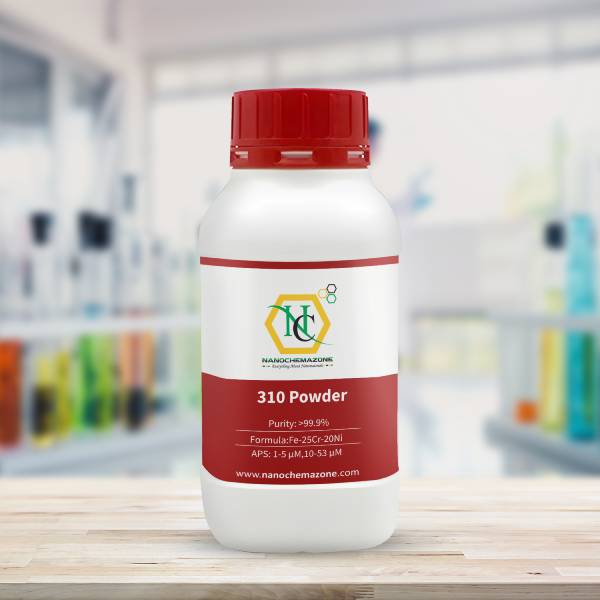
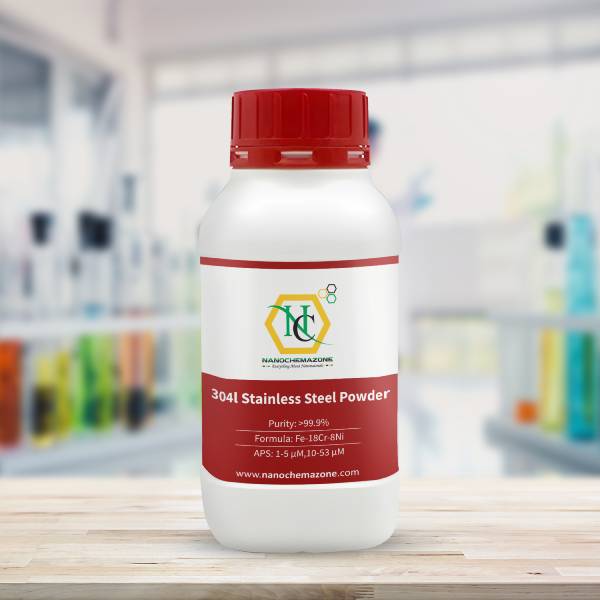
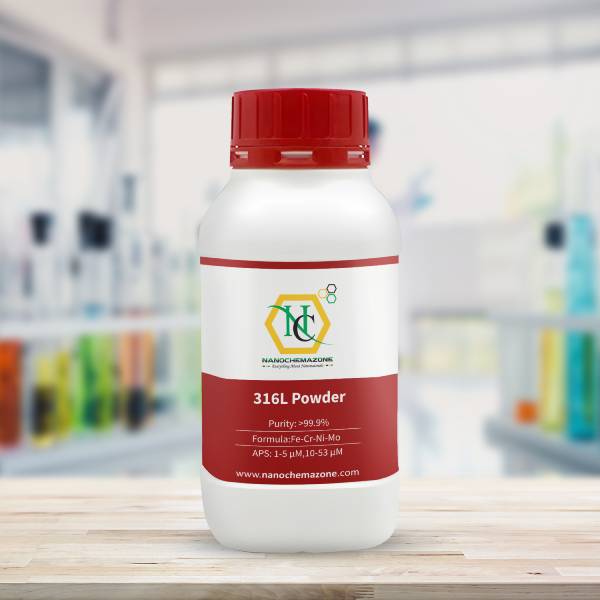
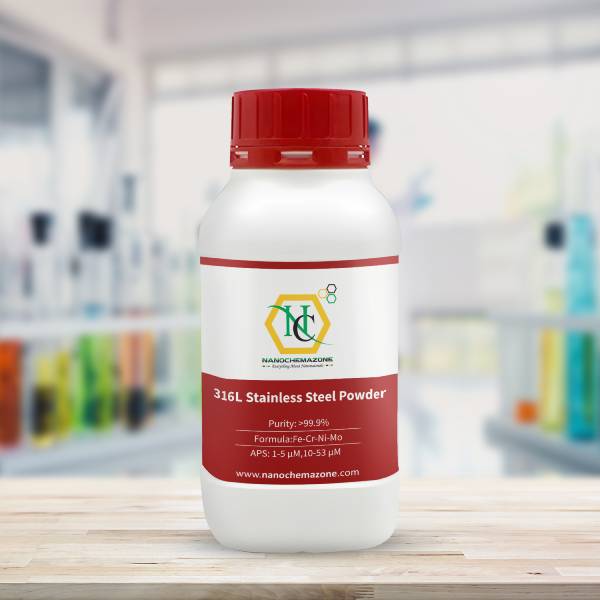

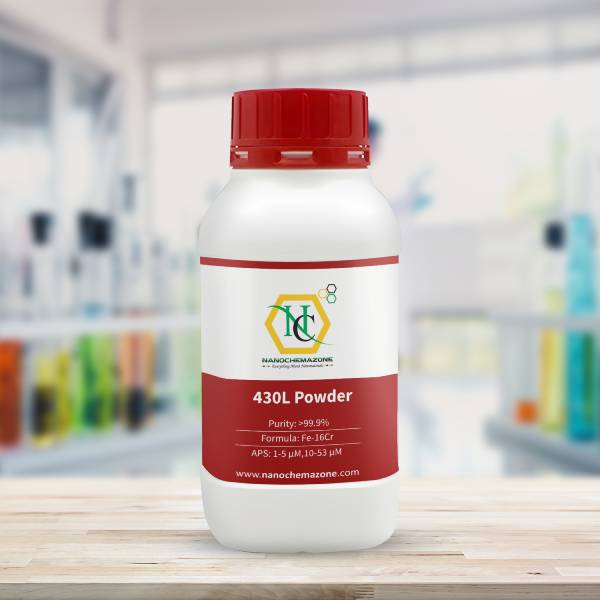
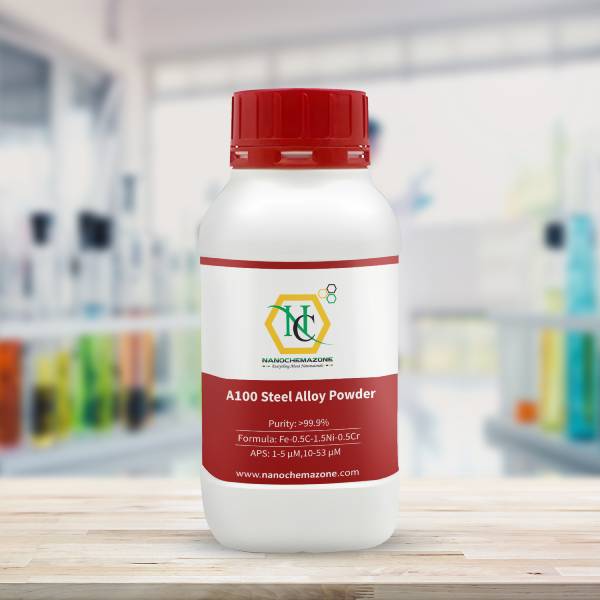
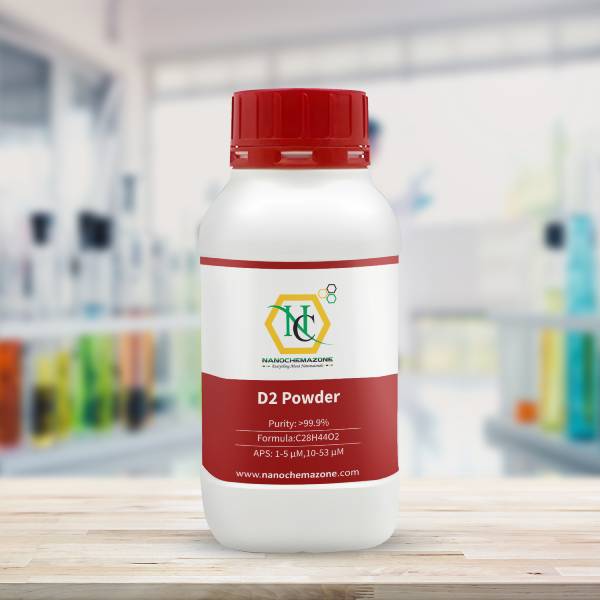
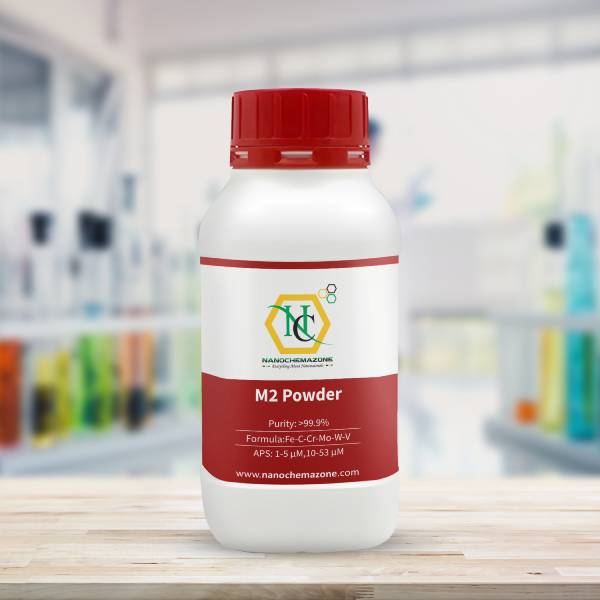
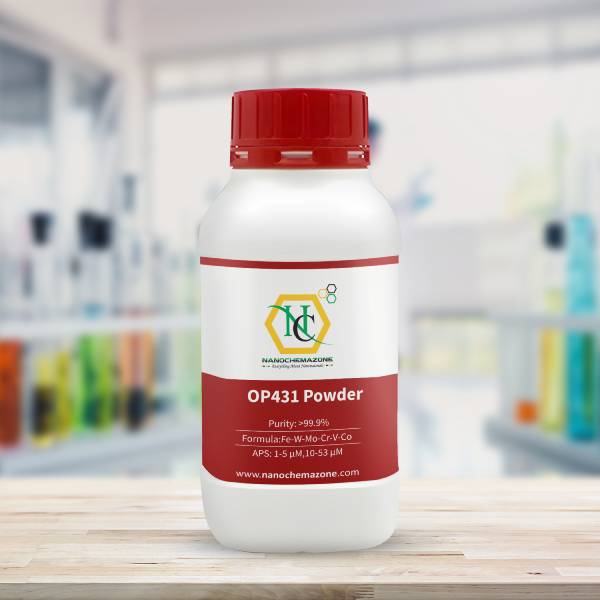
Reviews
There are no reviews yet.